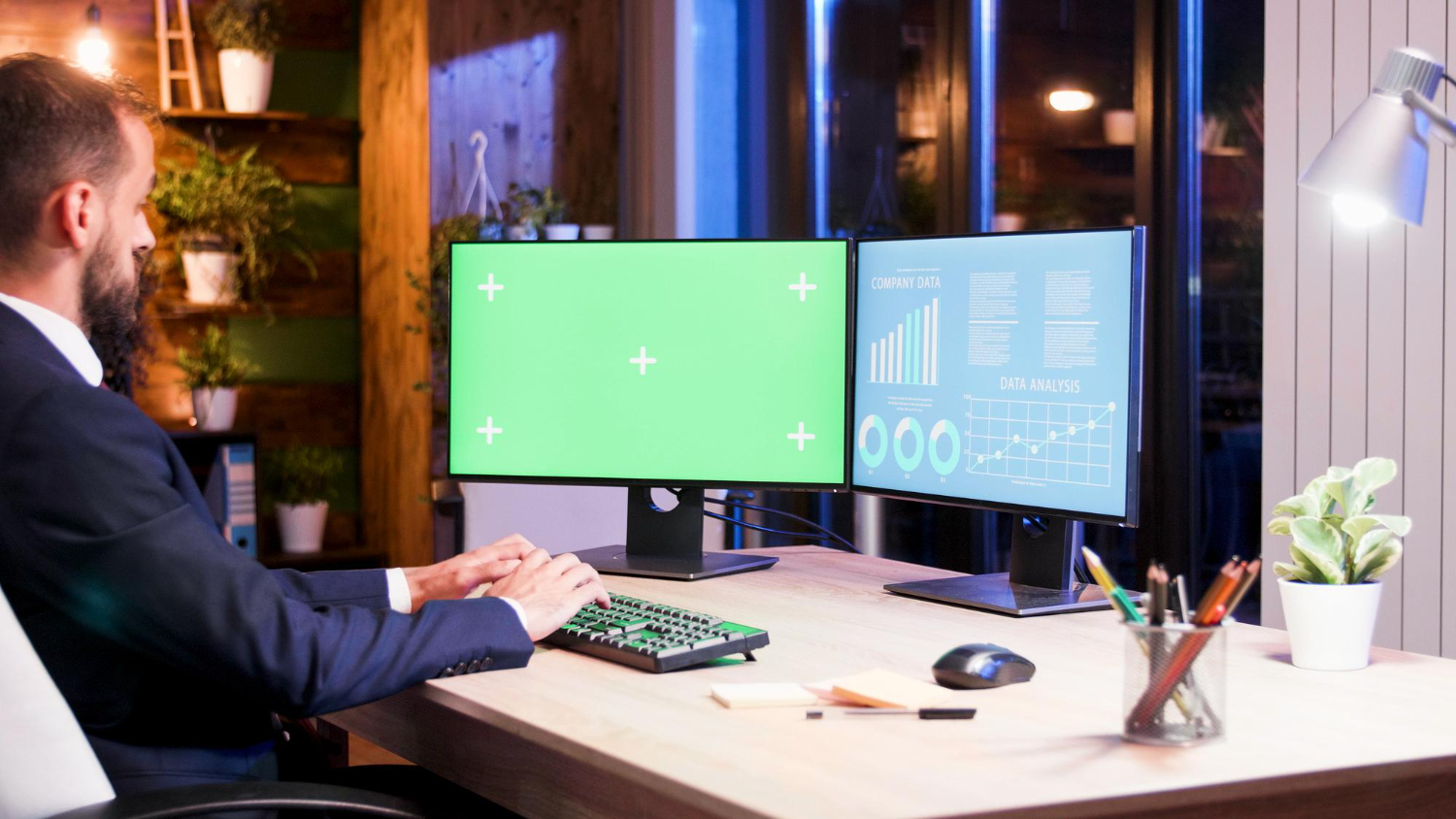
Expand your work by adding a second screen to your computer
In terms of increased productivity, one of the best upgrades you can give your laptop or desktop is not a faster processor, more RAM or more storage
It adds a second screen to your setup.
Doubling the screen space may not be as immediate, as it will change how fast you can complete things, but consider how often you have two or more programs open and how long you have to jump from one to the other.
Comparing websites, spreadsheets, documents, hard drive folders, emails or photos side by side is more convenient and saves you a lot of time if you replace every second spent clicking, dragging and moving the mouse with almost direct eye clicks. .
Even better, this is an upgrade that is quite easy to perform once you swallow the cost of additional hardware. Windows and macOS are set up to instantly recognize and use another monitor, so configuring a second monitor doesn't have to take long. Buy and use the second screen
Check prices from budget to more expensive
So take your time and shop for the best deal when deciding where to spend money. If you don't work in graphic design or video editing, the middle class budget is fine.
The two most important details to consider are the size of the monitor in inches (how big the screen is) and the resolution of the pixels (how sharp the screen is). As with most things, the bigger and sharper the better, so a good way to choose is to go as high as possible in both metrics while sticking to your budget.
Brightness levels and contrast ratios are also important (again, the higher the better), as is the hidden technology that comes out of the screen. For general use, look for a vertical tuning (VA) LCD monitor, even if professionals want to upgrade to an LCD display with in-plane switching (IPS). Image quality varies from view to view, but IPS usually offers better black quality at the expense of a wider viewing angle.
However, we don't want you to be lured to too many terms and details of technology, because in addition to size and resolution, it's one of those hardware that you don't have to suffer from too much. Checking online reviews or - even better - a physical look at the screens of computers in a store is often more informative than a data sheet.
But the important thing is that you get a second screen that can be connected to your desktop or laptop. HDMI, DisplayPort, Thunderbolt and USB-C are the most important connection standards to consider, so make sure your computer's outputs match at least one of your monitor's inputs.
When you add a second screen to your desktop, try to get something that matches the size of your original display - it's easier for your eyes to switch between two monitors that have the same dimensions. If you use a laptop, there is usually better space on the second screen.
How to add second screen in your window
All you have to do to add a second Windows view is turn on the monitor and connect it to your laptop or desktop computer. Windows immediately recognizes that you've added a second screen and displays your desktop wallpaper on a new screen. If this automatic configuration does not work properly or you want to go through its options, go to Settings (click on the gear icon to the left of the Start menu) and select System and Display. In the next dialog you should see your two screens represented by 1 and 2 (click on Identify to find out where). If you can't, you can click Detect and prompt your computer to find a connection.
If necessary, click and drag the displayed icons to make sure they match your physical layout - so that you can correctly identify the left and right monitors, for example. In the future, you can set the resolution and orientation of each view. Use the Set as Main Display check box to set which of your monitors are considered primary - these are the ones that display the Start menu and taskbar, and where most of the pop-up dialogs are.
With the correct monitor configuration, you can drag open application windows from one display to another to get it in the right position. For example, have one screen for social media channels and one for emails; or one screen to watch videos and another to browse the web. If you magnify all the windows on the screen, they get the overall view they are currently using.
Add a second screen to macOS
Setting up the second screen in macOS is as easy as setting up in Windows - turn on the second screen, plug it into your Mac and it should be visible on your computer. To reposition monitors (left and right), open the Apple menu, choose System Preferences, Monitors, and Layout, and drag windows in place.
or look where the view is, click and hold one of the windows and a red box will appear around it (in the dialog box and on the monitor). You can adjust the screen resolution and size by moving the Display tab to the same dialog box (actually, two dialog boxes open, one for each screen).
Like Windows, simply drag open browser windows and tabs between screens and move them from one screen to another. Again, maximizing all open application windows will fill the screen it currently has.
To create a second view, click the Air Play button (arrow and rectangle) on the macOS menu bar, then select your iPad from the list. If you do not see it, you must go to System Preferences and Displays and activate the Air Play Display option..